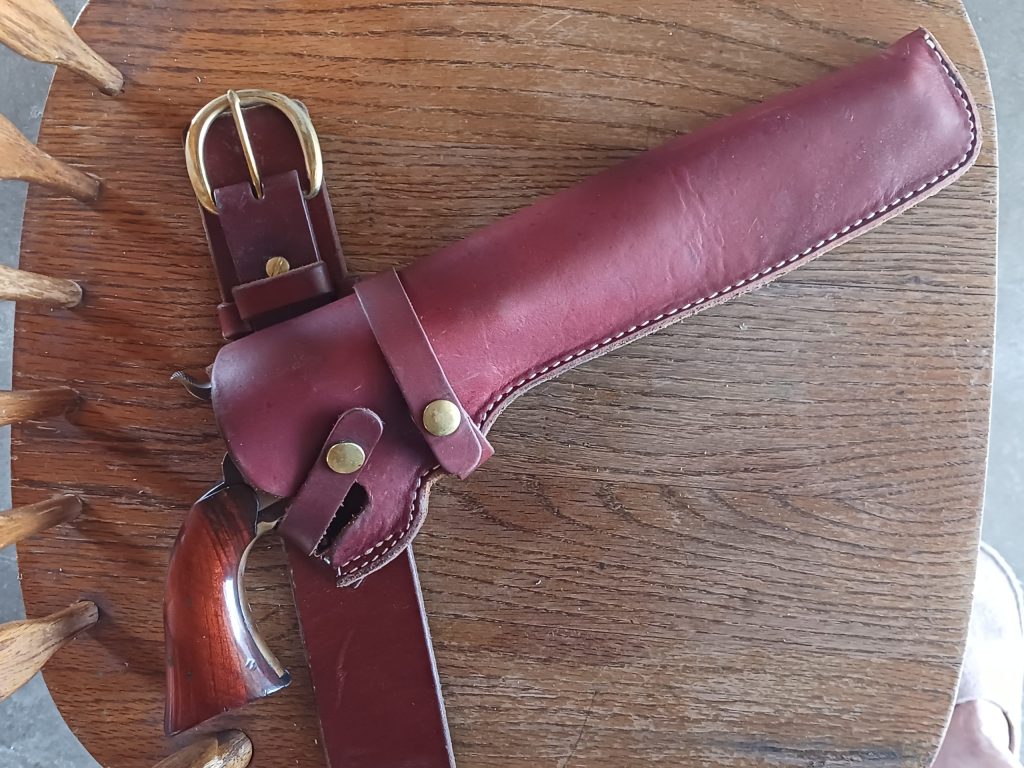Specifications
- Manufacturer: Uberti
- Year Manufactured: 2010
- Caliber: 44
- Capacity: 6
- Overall Length: 15 1/2″
- Barrel Length: 9″
- Barrel Type: Round, Tapered
- Rifling: 1:18″ LH
- Groove Depth: .006″
- Cylinder Chamber Diameters: .446″ – .447″
- Cylinder Chamber Depths: 1.645″ +/- .003″
- Sights: Hammer notch, Front blade
- Weight: 4 lbs. 8 oz.
- Percussion Caps: #11
- Availability: New

Review
The Walker frame and internals seem solid and unbreakable. The hand is large as befits the frame, and the lockup and timing are very good. It feels very tight for such a large frame. I have not put a lot of heavy loads through it, so maybe it would loosen up a bit, but if it did it could certainly stand it. Paradoxically, my heaviest revolver has the lightest of all the trigger pulls. There is a small fraction of a take up, and then, with what feels like barely a 2 lb. pull, the hammer falls like Thor’s.
A problem I had with my Walker, aside from caps getting in the works, was inconsistent ignition. The hammer so closely fit the channel in the frame it was rubbing on the side. The problem was solved by shaving the hammer with a stone. It took a lot of range time, powder, ball and caps to solve. With low velocity shooting in my garage, it would have been solved with a lot less resources, time, and embarrassment.

Another issue was the loading lever spring broke.
Loads
According to Sam Fadala’s “Black Powder Loading Manual” the Walker Colt Revolver was able to swallow a Pyrodex P load totaling 57 grains, the most that would fit in the chambers. He recorded a muzzle velocity of 1215 fps with a .454″ round ball. I remember trying a 40-grain load, but didn’t record any data regarding accuracy or velocity.
After the ranges closed down and I started shooting in my garage, the Walker was the easiest to develop loads for: The .440″, .445″ round balls, and the .4375″ (7/16″) conicals were very accurate at short ranges with an extremely low power load of 5 grains of Triple-7 FFF.

Going Forward
Going forward, I plan to continue to use my round ball derived swaged conicals and also, I will shoot, reuse, and swage 200 grain conicals. I will attempt to increase my gallery load qualifying range from 5 yards to 10.



